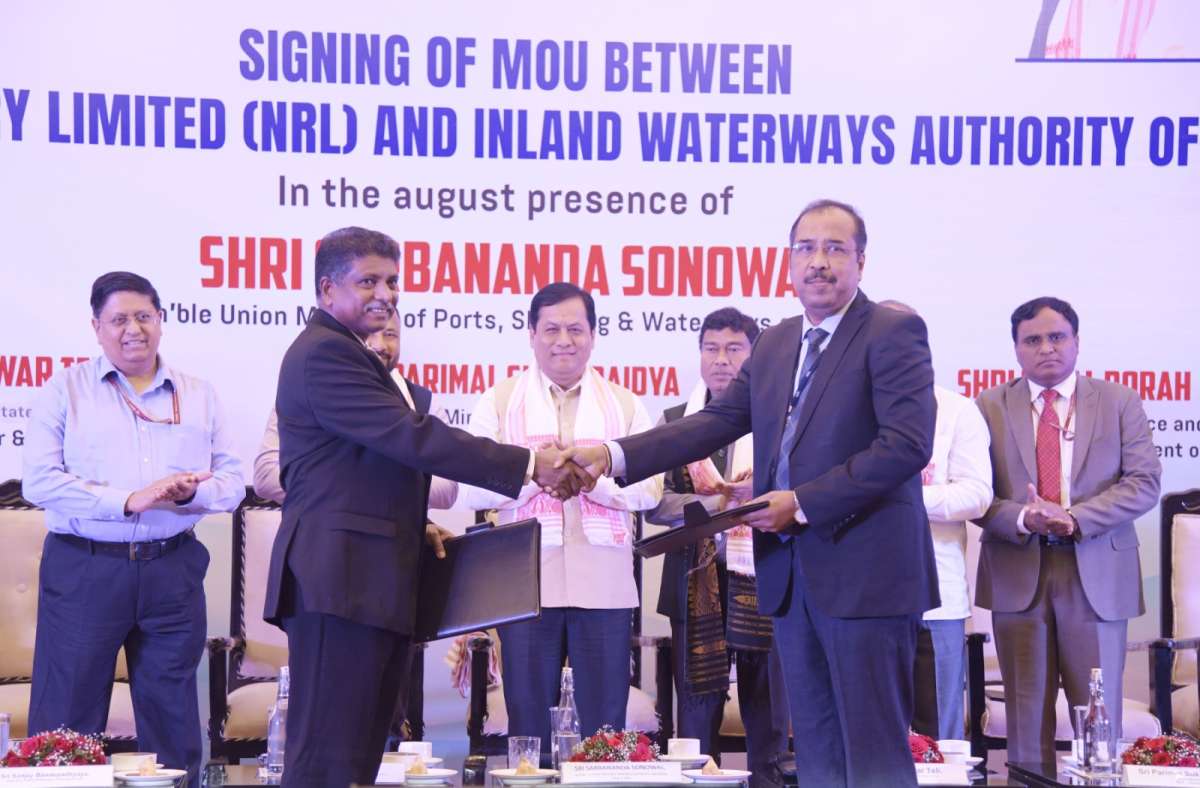The NRL will set up a terminal at Assam’s Jogighopa Logistics Park with rail connectivity….reports Asian Lite News
A Memorandum of Understanding (MoU) has been signed between the Inland Waterways Authority of India (IWAI) and Assam’s Numaligarh Refinery Limited (NRL) to use the national waterways of the Brahmaputra river and the Indo Bangladesh Protocol Route (IBPR) for export of petroleum products to Bangladesh and other south east Asian countries.
The MoU signing ceremony was attended by Union minister Sarbananda Sonowal where he said, “It is a watershed moment for inland waterways for promotion of trade in the Northeast India region. The MoU is aimed at powering the PM Gati Shakti National Master Plan to bring in transformative change in the cargo movement for the region.”
“Under the dynamic leadership of the Prime Minister, the visionary Act East policy is empowering Northeast India towards unlocking the full potential of hydrocarbon vision 2030,” he added.
According to Sonowal, northeast India has the potential to become the engine of the country’s growth and the rich interwebs of water bodies and rich potential of hydrocarbons must be explored in the best possible manner.
The MoU is aimed at powering the PM Gati Shakti National Master Plan to boost India’s Act East Policy. The NRL will export around 10,000 MT of petroleum & petrochemical products per month from IWAI Jogighopa Multi Modal terminal.
The NRL will set up a terminal at Assam’s Jogighopa Logistics Park with rail connectivity. This MoU is aimed at fulfilling the ‘Hydrocarbon Vision 2030′ for the Northeast by enabling inland waterways transportation via the Brahmaputra.
According to an official statement, this will tremendously boost commerce in the Northeastern region.
The MoU was signed by A Selva Kumar, Director, IWAI and Subrata Das, Chief General Manager (Marketing), NRL. Under this MoU, the IWAI will provide its terminal for cargo movement, providing technical support, land to lay down a petroleum pipeline, bunkering facilities to be operated at various places en-route IBPR, provide assistance through its vessels, technical assistance in making available vessels as and when required.
The NRL will provide 40 acres of land with a provision of getting connected to the nearest railway station at Jogighopa; erect the loading and unloading facility; as well as realisation of a vision to transport 10,000 MT of petroleum & petrochemicals products per month


